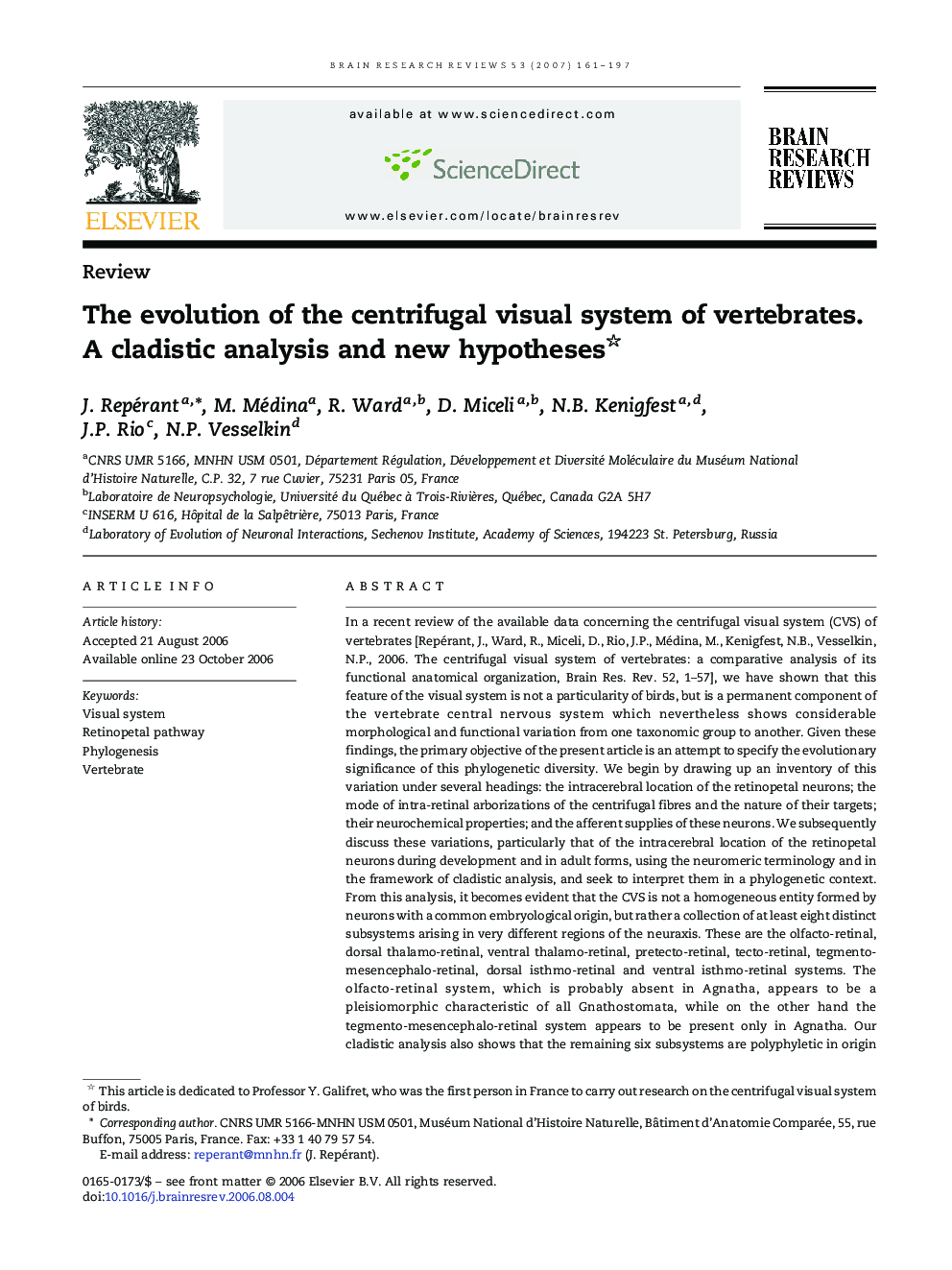| Article ID | Journal | Published Year | Pages | File Type |
|---|---|---|---|---|
| 4334034 | Brain Research Reviews | 2007 | 37 Pages |
In a recent review of the available data concerning the centrifugal visual system (CVS) of vertebrates [Repérant, J., Ward, R., Miceli, D., Rio, J.P., Médina, M., Kenigfest, N.B., Vesselkin, N.P., 2006. The centrifugal visual system of vertebrates: a comparative analysis of its functional anatomical organization, Brain Res. Rev. 52, 1–57], we have shown that this feature of the visual system is not a particularity of birds, but is a permanent component of the vertebrate central nervous system which nevertheless shows considerable morphological and functional variation from one taxonomic group to another. Given these findings, the primary objective of the present article is an attempt to specify the evolutionary significance of this phylogenetic diversity. We begin by drawing up an inventory of this variation under several headings: the intracerebral location of the retinopetal neurons; the mode of intra-retinal arborizations of the centrifugal fibres and the nature of their targets; their neurochemical properties; and the afferent supplies of these neurons. We subsequently discuss these variations, particularly that of the intracerebral location of the retinopetal neurons during development and in adult forms, using the neuromeric terminology and in the framework of cladistic analysis, and seek to interpret them in a phylogenetic context. From this analysis, it becomes evident that the CVS is not a homogeneous entity formed by neurons with a common embryological origin, but rather a collection of at least eight distinct subsystems arising in very different regions of the neuraxis. These are the olfacto-retinal, dorsal thalamo-retinal, ventral thalamo-retinal, pretecto-retinal, tecto-retinal, tegmento-mesencephalo-retinal, dorsal isthmo-retinal and ventral isthmo-retinal systems. The olfacto-retinal system, which is probably absent in Agnatha, appears to be a pleisiomorphic characteristic of all Gnathostomata, while on the other hand the tegmento-mesencephalo-retinal system appears to be present only in Agnatha. Our cladistic analysis also shows that the remaining six subsystems are polyphyletic in origin and have arisen independently on several occasions in different radiations of Gnathostoma. In conclusion, we suggest that, in the course of the palaeontological history of vertebrates, these different retinopetal pathways have been selected on the basis of widely different environmental pressures which remain to be identified.
